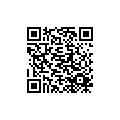Teaching in Tune
SDSU researchers studying effects of music on learning in preschoolers

Ask someone to say the alphabet, and chances are somewhere between “C” and “J” the recitation will turn into an all-too familiar tune. That’s the way most people learned the 26-letter English alphabet, as well as many of the other building blocks of education. San Diego State University researchers have been studying how music might be used to teach more than just reading, writing and arithmetic.
By introducing songs about social and emotional behaviors and cognitive skills to children, researchers hope to demonstrate the power of music—if incorporated strategically—in all areas of education.
“A lot of research indicates the connection between music and math and science development,” said Shulamit Ritblatt, chair of SDSU’s Department of Child and Family Development. “The idea behind this project … is to develop songs that can help us teach these (other) types of skills.”
““As teachers we use a lot of tools to help (children) learn social behavior. This puts a new twist on things.””
SDSU Children’s Center as a partner
The SDSU Children’s Center, with its population of more than 250 infant- through preschool-aged children, has been the focus of a number of research projects through the years, and is the perfect laboratory for the music study.For this project, SDSU has been working collaboratively with local company, Baby Genius, to develop songs that address skills considered important to the growth and development of children. The company’s Circle of Education is an existing program designed to prepare preschool-aged children for the fundamentals of the kindergarten curriculum. After meeting SDSU President Stephen L. Weber, Baby Genius founder Larry Balaban brought the concept to SDSU to study its actual effects.
About the study
Children from the center’s preschool classes were assigned to one of two groups—one that would have the music integrated into its daily curriculum, and one that would not. Then Balaban personally introduced the songs to children and teachers in the control group by leading classroom sessions, which were more akin to a Yanni concert than a lesson.
“To kick off this year’s research, I taught for a week in the classrooms and I sang to the kids,” Balaban said. “That allowed me to figure out gestures and hand motions and a lot of new activities that could really enhance the program and bring it forward in a new, more positive way.”
Behaviors taught with songs include: “Raise Your Hand,” “Taking Turns,” “Keep Your Hands to Yourself,” “Pinch Your Pencil” and “Wash Your Hands.” Songs are brief and lyrics are easy for children to remember.
“A lot of it is socialization,” Balaban said. “Taking turns is an important thing. We have “Criss Cross Applesauce,” which allows kids to know when it’s circle time. We have a sign-in song and a sign-out song so kids can adjust to the fact that they have to say goodbye to their mom.”
Teachers at the Children’s Center play the songs a few times a day, and proactively look for opportunities to use the songs as teaching tools.
They just learn better
“They just learn better when we sing things,” said Michelle Alignay, a preschool teacher at the Children’s Center. “And now, since the kids know and love the songs so well, it just comes out in general conversation. Occasionally you’ll catch a kid in the corner singing to themselves.”
During the first phase of the 10-week study, Ritblatt said, SDSU students were in the classrooms, observing how the teachers used the music and what effects it was having on the children. They also met regularly with preschool staff. Teachers reflected on how they used the music and determined if new songs needed to be created.
In the beginning, and then again at the end, researchers assessed the children’s self-esteem, social and emotional development, levels of skills acquisition and level of parent involvement. A satisfaction scale for parents and teachers was also developed.
According to Ritblatt, the first phase of research was intended to determine best practices in a variety of areas using music. Researchers hope to eventually develop a program that can be applied to other areas, including working with families in which English is a second language.
“As teachers we use a lot of tools to help (children) learn social behavior,” Alignay said. “This puts a new twist on things.”
Homepage, story and slideshow photos by Crissy Pasqual.






